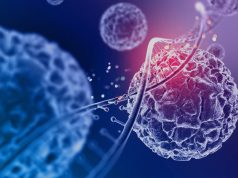
Historically, the increase of nicotine consumption is tightly linked to the expansion of the tobacco market. The adverse addictive effect of nicotine, as a result of its worldwide success, was pointed out and used as a lever to maintain the system.
The dependence on nicotine, which is basically a game of molecules within the brain, is being deciphered by Dr. Loren H Parsons and his team from the The Scripps Research Institute. In their last article [1], published on January 11, 2016, in the prestigious journal Proceedings of the National Academy of Sciences (PNAS), they describe a pathway where a lipid (2-arachidonoylglycerol or 2-AG) may act as a switch for the motivation to consume nicotine, a major step towards a medical treatment of nicotine dependence.
How does it work?
The brain’s natural reward system releases the neurotransmitter, Dopamine, which acts on neurons to trigger positive emotions. The result of this pathway is an increased excitation. In contrast, GABA (Gamma aminobutyric acid) is another neurotransmitter of the reward system that inhibits the excitatory mechanism of Dopamine. Hence, the Dopamine/GABA equilibrium is dynamic and controls the emotions.
When nicotine is provided to the brain, neurons release Dopamine to provide a sensation of wellness, to suppress stress or cut the appetite… Exposure to nicotine destabilizes the Dopamine/GABA equilibrium by enhancing the “excitative effect” of Dopamine while reducing the action of its inhibitor, GABA. This unbalanced condition drives consumers to look for nicotine supply in order to re-establish the equilibrium. This is how addiction takes place. The way it maintains involves the lipid that is targeted in the aforementioned study.
The discovery
The authors found that chronic exposure to nicotine induces more 2-AG with the consequence of a lower effect of Dopamine (i.e. higher levels of GABA signalling). Their hypothesis is that targeting the modulation of Dopamine by down-regulating 2-AG production may help re-establishing the Dopamine/GABA balance.
They designed an experiment with rats having a history of nicotine exposure. They used an inhibitor (1,2,3-triazole urea (1,2,3-TU)) specific to 2-AG and saw GABA signalling returning to normal. According to Matthew Buczynski, the first-author of the study, this demonstrates that “2-AG acts as a molecular switch for turning an important inhibitory control of Dopamine neurons on and off”.
Promising results for a medical approach with limited side-effects
This animal study is regarded as promising by the authors who anticipate that a drug might someday help smokers quit smoking more easily. The increase of the rewarding effect of Dopamine by blocking the 2-AG modulator is foreseen as the way to help smokers get rid of nicotine without affecting other natural rewards (food, sex, physical exercise,…). The researchers precise that it is a first step into the design of new types of therapies for nicotine addiction treatment.
E-cigarettes and self-administration of nicotine
The study suggests that nicotine self-administration would play a key-role, in contrast with its continuous delivery with nicotine patches and gums. As nicotine delivery devices, e-cigarettes and vaporizers allow adjusting nicotine uptake over a wide range of parameters, from e-liquid concentration to puff frequency.
The technological development around e-cigarettes is actually seen as a gimmick. E-cigarettes can however be regarded, in a medical approach, as an aid for monitoring vaping habits and to follow the progress of self-administration of nicotine. The increased safety provided by advanced control modes is another argument for its use in medical programs. Such devices, new generation, should be regarded as a first-choice complement to nicotine withdrawal medicine in the future.
[1] Buczynski, M. W., Herman, M. A., Hsu, K. L., Natividad, L. A., Irimia, C., Polis, I. Y., … & Roberto, M. (2016). Diacylglycerol lipase disinhibits VTA dopamine neurons during chronic nicotine exposure. Proceedings of the National Academy of Sciences, 201522672.











